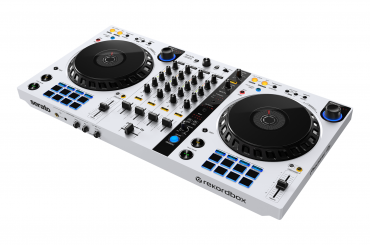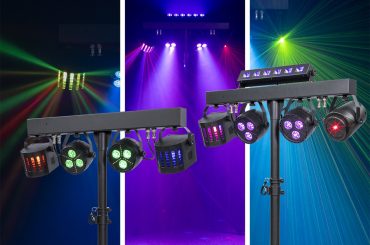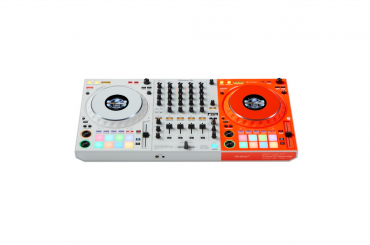DJs, we are in the midst of something of a portable speaker renaissance. It seems like there has never been a more competitive landscape with so many good offerings from great brands.
Previously, speaker companies might have been able to get away with basic components and limited connection options. Now, it seems that, in order to stand out, speakers have to push the envelope for what is possible. In other words, the bar is set really high, and that’s a great thing for DJs.
For one, there’s no shortage of choice across the market. Second, the performance-to-price ratio for powered speakers has never been better – and one of the brands leading this charge is Mackie.
Founded by former aerospace engineer Greg Mackie, Bothell, Wash.-based Mackie has spent decades making a name for itself as a manufacturer of high-performance professional audio equipment. Its current product lineup includes everything from microphones to mixers. However, most DJs probably recognize the name Mackie as an innovator in portable powered loudspeakers. Its latest generation of active speakers, the SRT Series, promises to continue the brand’s storied history and bring impressive features to DJs, bands, and venues.
Last year, I checked out Mackie’s SRM V-Class PA speakers for the magazine, and I was very impressed with them. Consider the SRT Series the little brother of the high-performance SRM V-Class. Testing the SRTs almost immediately after the SRM V-Class’s, I honestly felt a bit of deja vu. Both models look very similar and offer equally similar usability, but the SRM V-Class will likely go that little bit farther.
Of course, the range-topping SRT215 has an equivalent MSRP ($699) to the smallest SRM V-Class unit (SRM210 V-Class). Last year, I wrote that I was astounded by the price and features of the SRM V-Class, so it’s all the more remarkable to see many of the same features included here.
There are four flavors of speaker within Mackie’s SRT range: the SRT210 10-inch; the SRT212 12-inch; the SRT215 15-inch; and the SR18S 18-inch subwoofer. All three tops feature a 1,600-watt Class D amplifier, custom high-efficiency transducers, an “Advanced Impulse” DSP module, a custom SYM-X horn system, and a built-in 4-channel digital mixer with built-in Bluetooth controlled by a full-color display.
The sound coverage on the 10-, 12- and 15-inch units is identical: 90-degrees horizontal and 60-degrees vertical. Built inside every SRT speaker is Mackie’s Transparent System Protection suite. This system can institute automatic limiting to protect the amplifier and speaker hardware when volumes get too high or signals get too hot. Unlike other speakers, however, the system tries hard to ensure limiting does not compromise sound quality. The speakers also have Power Factor Correction, which allows the speaker to run smoothly even when plugged into an unstable power source.
Each model in the SRT family differs from each other in max SPL (loudness), frequency response, and weight. The SRT210 has a max SPL of 128 dB, the SRT212 achieves 132 dB, and the SRT215 pumps out 133 dB. The SRT210 weighs just 28.2 pounds, the SRT212 comes in at 32.5 pounds, and the SRT215 tips the scales at 37.1 pounds. The SR18S sub, suitably, weighs 74.5 pounds.
The Test: I spent some time with a pair of SRT215s, and I thoroughly enjoyed using them. Each speaker shipped with an instruction manual and an IEC power cable. Pulling the unit out of the box, I was surprised by how light it was. I’d like to think I have a good idea of how much a 15-inch speaker weighs, but picking this one up threw all my preconceived notions out the window.
However, its svelte weight doesn’t come across as fragility. The speakers feel durable and well-made, much like Mackie’s other recent speaker releases. The front grille and back panel are both metal, and the rest of the speaker feels solid. There are three grab handles – one is at the top and two are on the sides. On the bottom, there are four feet and two pole mounts: one allows for angled mounting, while the other is used for traditional straight mounting.
The back is where things get interesting. There’s an IEC port, an on/off switch, and the built-in digital mixer. Sound is inputted into channels 1 and 2 of the mixer by XLR/TRS combo jacks, and channels 3 and 4 accept a 1/8th inch headphone jack or a Bluetooth signal. There are channel-gain knobs, channel outputs for channel 1 and channel 2 on XLRs, and a mix out on XLRs. The channel outs work great when multiple speakers need to be fed signal unadjusted by the speaker, while the mix out is perfect for an external subwoofer, a recording device, or anything that needs to receive the signal that has been mixed by the speaker. (I should also mention that two SRT speakers can be linked wirelessly.)
One of my favorite features found in Mackie’s latest speakers is the full-color screen, and I’m thrilled to see it return here. I could write a whole article just about the functionality the screen unlocks, but here are the highlights. The screen is the main way of interacting with the built-in mixer. Users can control channel levels, individual channel EQs, the EQ of the master output, and a range of speaker parameters directly from the screen. The speaker’s five built-in “voices” – flat, live, speech, club, and mon – can be accessed by the screen. Users can set a crossover point for when an external subwoofer is in use. Mackie has helpfully included presets for Mackie’s SR18S and DRM18S subwoofers. Of course, if you’re using a different model subwoofer, you can always set the crossover point manually.
The screen also lets users program a distance-based delay; helpfully, the speaker automatically calculates the delay based on distance in both meters and feet. The screen is also how a user can connect their speaker to a Bluetooth-capable device. Pairing took just seconds, and you can easily interrupt pairing or disconnect an existing connection from the screen, instead of having to figure out which guest has accidentally (or deliberately) paired their phone to your speaker.
On that subject, the entire screen can be locked with a passcode that can be set up in the config menu to prevent someone from toying with your settings. You’ll have no more nosy guests thinking they have a doctorate in audio engineering adjusting your levels.
Connecting the speaker to the free-to-download SRT Connect smartphone application takes the configurability of the speaker one step further. From the app, you can control all functions on the screen without being physically at the speaker. I’m sure many mobile DJs will really appreciate this feature. With the app, users can also save and recall presets.
Let’s say you’re at a venue you play regularly and you’ve dialed the acoustics just right. With this feature, you can save your settings and recall them instantly the next time you need them. Furthermore, let’s say you installed these speakers at a venue that hosts multiple events. Venue staff could easily save presets for specific events and have the speaker sound different for the 11:00-a.m. business meeting and the 11:00-p.m. guest DJ set.
The portable speaker game has gotten competitive in recent years, and they’re being purchased by everyone from mobile DJs to venues to popular individuals throwing parties. As you will find with any level of research, there are a lot of really good options from established brands. But, ultimately, I think it comes down to price and desired features. Few speakers on the market can match these in terms of features, and I genuinely think some might find themselves deciding between Mackie’s SRT and SRM V-Class speaker lines. The SRT210 retails for $499, the SRT212 for $599, the SRT215 for $699 and the SR18S sub for $799. Good
To check out more tech reviews, click here.
DJ Times Magazine is copyright © 2021 by DJ Publishing, Inc. www.djtimes.com








